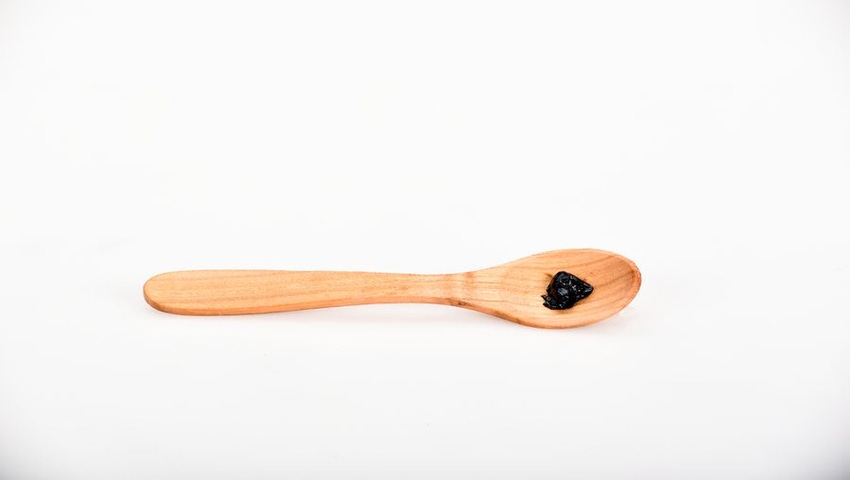Shilajit for sports nutrition: Untapped potential
The market appears to be largely aware of shilajit's uses in male health applications, yet hardly anyone seems to be taking the time to address the incredible potential for shilajit in sports nutrition.
July 28, 2016

If you mentioned “shilajit" to someone who frequents the world of nutraceuticals, there’s a good chance that their first thought would be “testosterone booster," and they wouldn’t be wrong in thinking so. In fact, modern research has been able to support many of the millennia-old claims recognizing shilajit as a safe, natural and effective supplement for promoting male reproductive health and for boosting testosterone levels.
Now, what many industry insiders and consumers don’t realize is that to label shilajit as an ingredient best suited for male health applications alone would be doing this mountain-forged ingredient an incredible disservice. While the market seems to be fully aware of shilajit’s uses in male health applications, hardly anyone seems to be taking the time to address the incredible potential for shilajit in sports nutrition.
What is Shilajit?
Before we explore some of the research supporting shilajit’s potential applications and opportunities as a sports nutrition ingredient, it’s worth taking time to discuss what shilajit actually is.
Typically sourced from the Himalayan Mountains in India, shilajit is a type of mineral pitch or rock humus. Over thousands of years, the organic substances that ultimately compose shilajit are compressed, combined and transformed into a pale-brown or black-brown, mineral-rich paste. Shilajit has been harvested and used for thousands of years by those who work within India’s Ayurvedic system of health care.
Sports nutrition applications
While testosterone may be a key component of athletic performance in its own right, shilajit has been shown to offer so much more than a testosterone boost for male consumers. But it is important to note that in many of the scientific studies where the efficacy of shilajit has been tested—including the studies referenced in this article—a trademarked form of purified shilajit, PrimaVie®, has been used.
Due to the variations and inconsistencies that have been found to exist among different brands of shilajit supplements, similar studies performed with other varieties or brands of shilajit may garner different results. That being acknowledged, researchers have been able to support the usage of shilajit in a number of different sports applications, including these:
Nitric Oxide (NO) booster
Unless you’ve been actively avoiding every nutraceutical industry publication for the last six months, there’s a good chance you’ve heard of, read or encountered nitric oxide (NO) boosters. Among industry insiders and sports enthusiasts alike, NO has been recognized for its abilities as a vasodilator (i.e., for its ability to cause blood vessels to dilate).1,2 The benefit of this vasodilation is that with increased blood flow, the body should be able to deliver more nutrients and oxygen to the body’s cells—including muscle cells. With the help of the additional fuel that’s been provided by the vasodilator, the muscle cells (at least in theory) should be able to perform better—leading to improved growth and stamina.
In one shilajit study, which examined the potential cardiovascular effects of 500 mg/d shilajit in both men and women, researchers recorded some promising results. Along with a noticeable improvement in the participants’ artery and heart/oxygen functions, the researchers were able to record a 30% increase in the participants’ NO levels (P<0.001). As an added benefit, the participants also experienced improvements in cholesterol and triglyceride levels. The research is not yet published.
Energy and physical performance enhancer
For many fitness enthusiasts and athletes, there are few words that sound better than “improved energy and physical performance." According to one study where healthy volunteers were asked to engage in aerobic exercise while taking 200 mg/d shilajit, researchers found participants experienced a 13% increase in their adenosine triphosphate (ATP) levels. Why is this significant? As one of the body’s most fundamental units of energy, increased ATP levels can easily translate into improved energy levels.
Similarly, when researchers investigated the effects of 500 mg/d shilajit on healthy recreational athletes, the results showed exercise time increased by 13% (P= 0.0028), and oxygen improved by about 9%.3 While these may not seem like the most impressive figures, it’s worth noting that although other stimulant-like ingredients, such as caffeine, have been associated with energy “crashes" and other side effects, there is little anecdotal or scientific evidence supporting that shilajit users will experience similar effects.
Supporting collagen growth in skeletal muscle
Recognized as being one of the strongest connective fibers in the human body, collagen plays a key role in the elasticity and strength of our muscle cells (gram for gram, type I collagen has been proven to have a greater tensile strength than steel).4 When one study’s participants were given 500 mg/d shilajit and asked to perform moderate exercise, the results demonstrated an increase in skeletal muscle adaptation via improvements in the ability of genes to produce collagen and other proteins that control muscle elasticity, repair and regeneration.5
Looking to the future
Whether it’s as a men’s health product or as a sports nutrition ingredient, it’s clear that we’ve only scratched the surface when it comes to this time-tested ingredient. As researchers continue to explore new and exciting possibilities for this natural wonder, it seems more likely than ever that shilajit will continue to function as a key component of sports nutrition in the years to come.
Melissa DellaBartolomea is a content marketing specialist for NutraScience Labs. Based in Farmingdale, New York, NutraScience Labs is dedicated providing companies and brand owners with excellent customer service and a full suite of dietary supplement manufacturing capabilities.
References
1Paddon-Jones D, Børsheim E, Wolfe RR. “Potential ergogenic effects of arginine and creatine supplementation." J Nutr. 2004 Oct;134(10 Suppl):2888S-2894S; discussion 2895S.
2Álvares TS et al. “L-Arginine as a potential ergogenic aid in healthy subjects." Sports Med. 2011 Mar 1;41(3):233-48. DOI: 10.2165/11538590.
3Maharaj V et al. “Clinical Evaluation of Safety & Efficacy of Shilajit (PrimaVie-Shilajit) for Improving Human Performance In Exercise Study of Healthy Volunteers – a Placebo controlled Study." Final Report Project No.: NAT/CR/20100901. Ramakrishna Mission Ashrama Hospital(Ayurvedic Unit), Narendrapur, Kolkata-700103. 2012.
4Lodish H et al. Molecular Cell Biology. Fourth Edition. New York: W. H. Freeman; 2000. Section 22.3, Collagen: The Fibrous Proteins of the Matrix.
5Das A et al. The human skeletal muscle transcriptome in response to oral Shilajit supplementation. Department of Surgery, Ohio State University, Wexner Medical Center. 2015:16 pgs.
About the Author(s)
You May Also Like




.png?width=800&auto=webp&quality=80&disable=upscale)